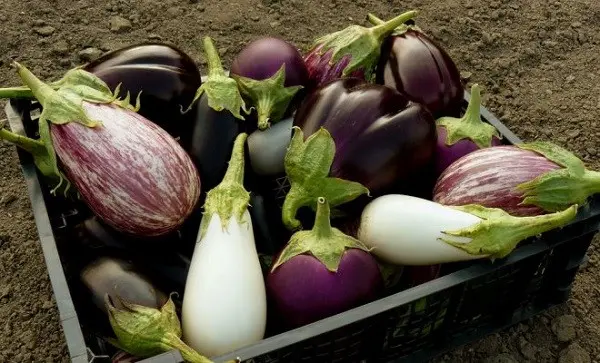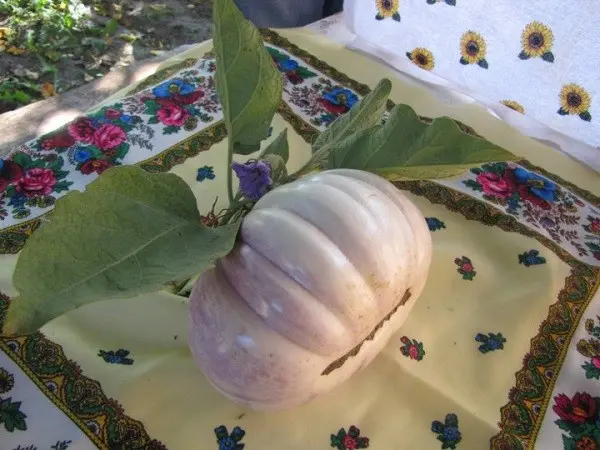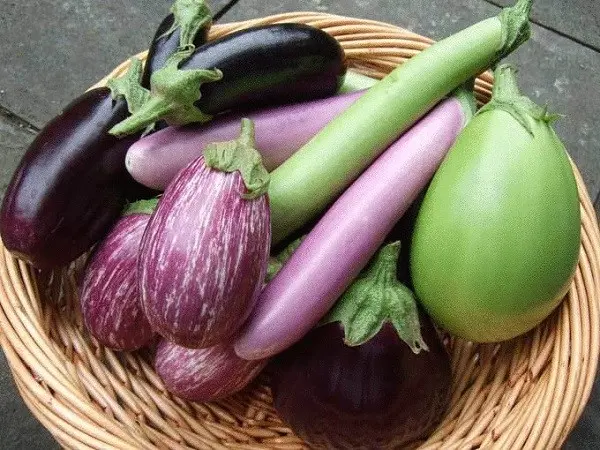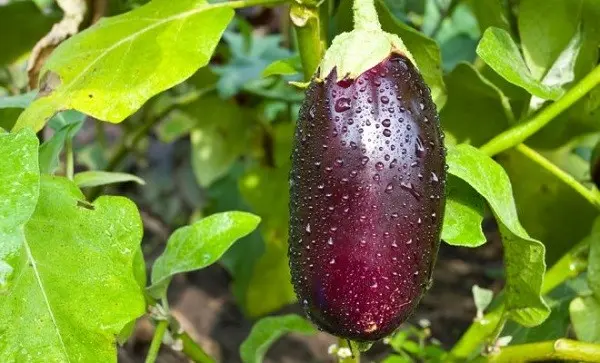

Eggplants have long established themselves as whimsical plants. To get a good harvest of this vegetable crop, it is necessary not only to provide it with proper care, but also to have time to collect vegetables from the garden in time. It’s no secret that overripe eggplants have a characteristic bitter taste. It is due to the content of solanine – an alkaloid, which is harmful to humans in high concentrations. Therefore, it is very important to figure out when you need to remove the fruits from the bush so that they are as healthy as possible.
When to collect
The timing of harvesting eggplant depends on the purpose of their use. If vegetables are grown for consumption and processing, then they should be removed from the garden at the stage of technical ripeness. If you need to collect seeds from eggplant, then it is better to wait until the fruit reaches biological ripeness.

Here the question arises – how to know that the eggplant has reached its technical or biological maturity? Well, firstly, you need to find out what is the ripening period for this eggplant variety. This information must be indicated on the packaging with seeds. According to the ripening period, eggplants are divided into:
- early ripe – the ripening period of such vegetables is 90-110 days from sowing seeds for seedlings;
- medium early – the fruits ripen in the period of 115-130 days;
- late-ripening – reach ripeness in 130-140 days.
If the proper conditions are created for the plants, and no force majeure circumstances (drought, frost, sudden temperature changes, diseases) have occurred during their growing season, then usually the vegetables have time to ripen on time, and by this time they correspond to their technical parameters.
This does not mean that the ripening period is the decisive criterion by which the eggplant is harvested. It is equally important to consider technical parameters, especially when vegetables are grown in cold climates, or weather conditions do not meet the needs of the vegetable crop.
To technical ripeness, eggplants ripen within 3-4 weeks from flowering, or 2-3 weeks from the formation of the ovary. Technical ripeness implies such a state of the fruit, in which their internal and external characteristics are fully consistent with the varietal description. The technical ripeness of a vegetable can be judged by the following characteristics:
- achieving a size corresponding to the varietal parameters;
- dense pulp without characteristic bitterness;
- the glossy surface of the vegetable – of course, various hybrids have now been bred for which a smooth peel is not characteristic, but still, most classic eggplant varieties have a smooth glossy surface.
There is a practice of determining the ripeness of fruits by color, however, in the case of eggplants, this criterion is not always appropriate. By color, it is easy to separate a ripened eggplant from an overripe (reached biological maturity), since the latter has a brownish color. It is impossible to separate the unripe fruit from the ripened to technical ripeness by color, since eggplant ovaries initially have a color characteristic of the varietal description: purple, lilac, black-blue or white.

It turns out that the main sign of fruit ripening is the acquisition of the optimal size. It is different for each variety – there are eggplants that do not exceed a length of 7-10 cm, but some varieties can grow up to 25-30 cm. Here you need to look at the fruit – if it has not grown within a week, this means that it is time to take off.
Sometimes vegetable growers prefer to pick small fruits, citing the fact that they are young and not bitter. However, this decision cannot be called correct. If, for example, cucumbers are more valuable while they are small, and eggplant needs to be given time to ripen to the end. Of course, it is not forbidden to use unripe eggplants for food, but it should be borne in mind that they do not have such a rich aroma and taste.
As for the pulp, it should be dense and springy in consistency. In a fruit hanging on a bush, the state of the pulp is checked by light pressure. If the peel sagged, but quickly leveled off, the eggplant can be considered ripe. And vice versa, if the pulp is too dense, and a dent does not appear in the peel when pressed, therefore, the vegetable has not yet reached technical ripeness.
In order to get seeds, the eggplant must be left on the bush until it is fully (biologically) ripe. The following characteristics testify to the biological ripeness of a vegetable:
- dark, brownish, sometimes even yellowed skin color;
- loose, easily squeezed pulp;
- when cut, the seeds are black or brown.

To obtain high-quality seed, the largest and most beautiful eggplants are chosen. They are left on the bush as long as possible – until the peel begins to dry out. Then the vegetables are removed and placed for 1-2 weeks in a cool dark place so that the seeds can ripen.
Every gardener wants to save his harvest as long as possible. It is clear that it will not be possible to preserve early and mid-season varieties of eggplant until winter, but vegetables of late varieties have a high chance of this. If suitable conditions are created for such fruits, they may well last until the New Year, and even longer.
For winter storage, eggplant should be harvested shortly before the first frost. In this case, you need to carefully approach the selection of fruits. For storage, young specimens of a saturated color, with a smooth and even skin, are suitable. It is very important that there are no damages on the vegetables, and mold or rot on the stalk. It is not recommended to wash plucked vegetables – you just need to put them in boxes, lay them with parchment or straw, and put them in a dark, cold place.
Video “Growing eggplant”
About when exactly it is necessary to harvest eggplants is described in the video.
How to

Eggplants do not tend to ripen simultaneously. So, first, the lower fruits are removed, which have stopped growing and meet all the technical parameters of the variety, and then, as they ripen, the upper ones. You need to check the ripeness of the fruits 1 time in 5-7 days – so you will not let them overripe. Fruit should not be left on the bush, which no longer grow, as they slow down the growth of new ovaries.
Ripe eggplants are cut with a sharp knife or secateurs along with a stalk 2-3 cm long. It is not recommended to tear or remove the fruits in any other way, as this can damage the bush on which the crop is still ripening. As a rule, the harvest lasts until the very frost, until the last eggplant ripens. In the cold, cut vegetables can be stored for a month, sometimes more.
Video “Eggplant. Harvesting”
Experienced gardeners talk about how to properly collect eggplant from the garden.









